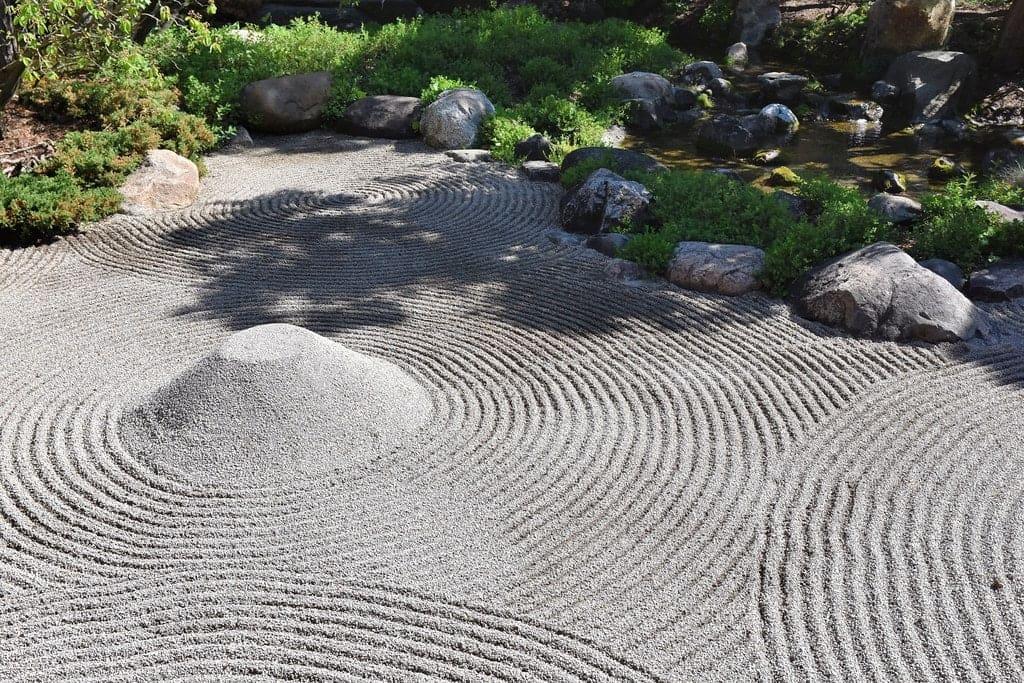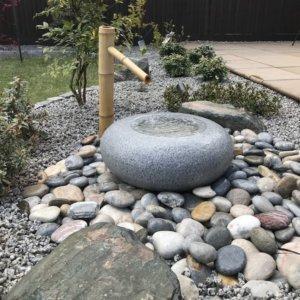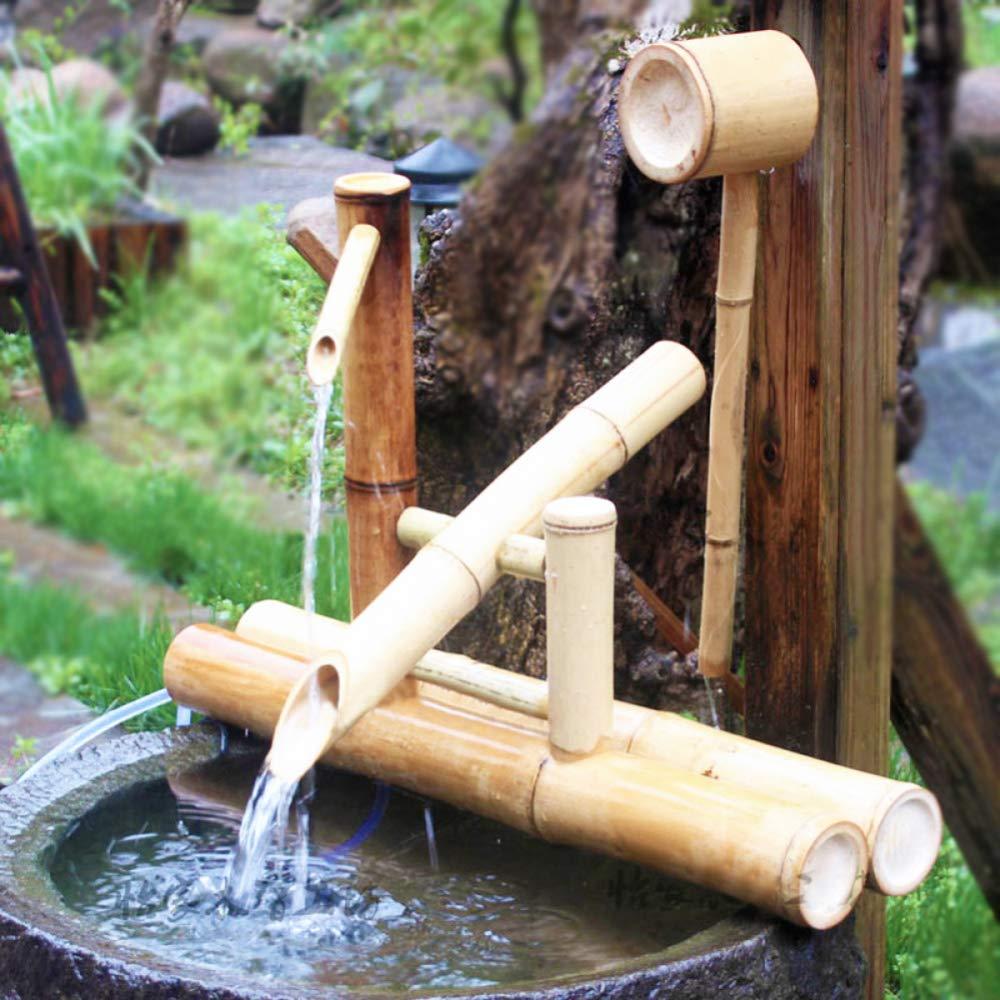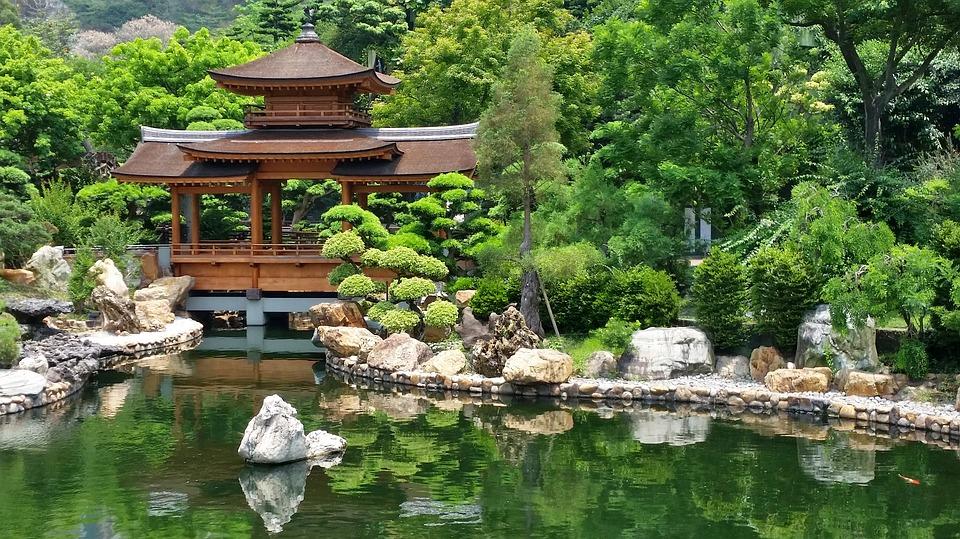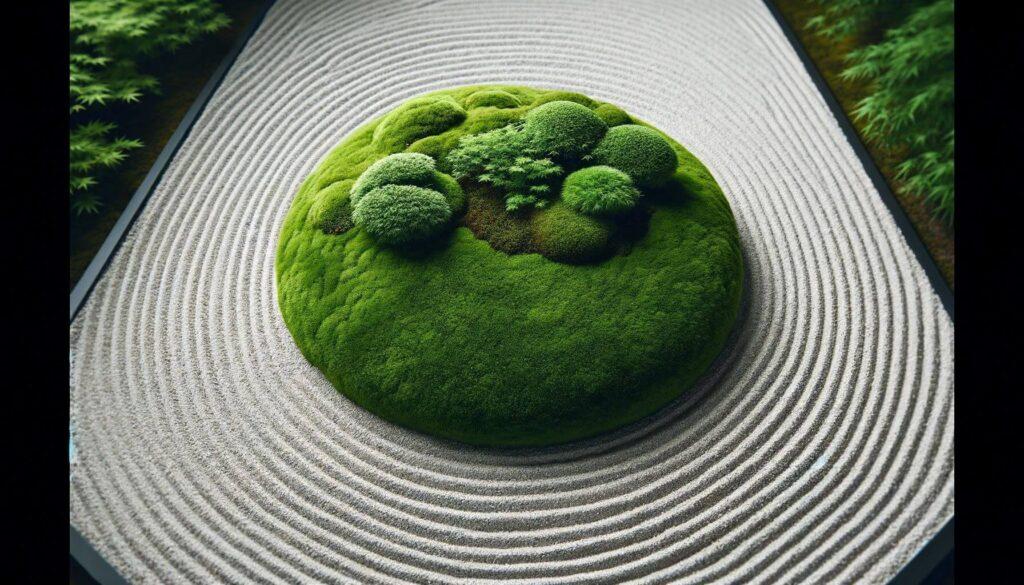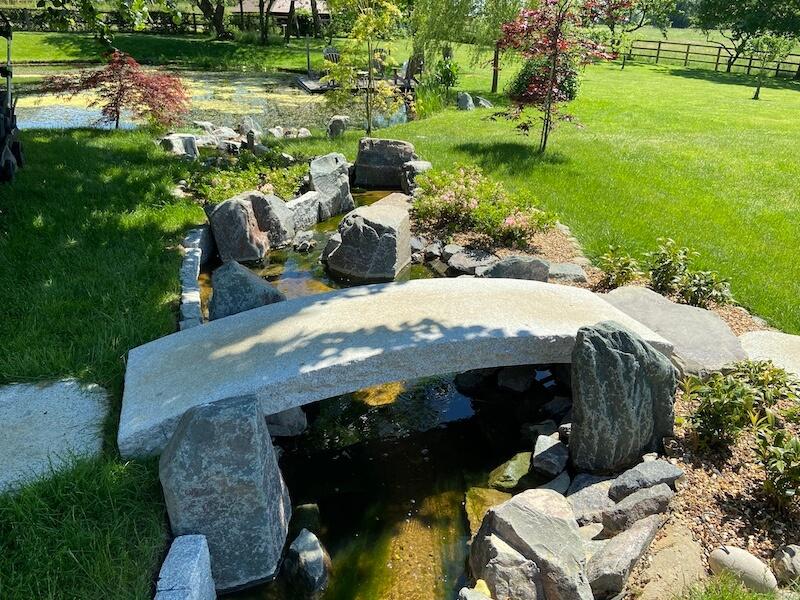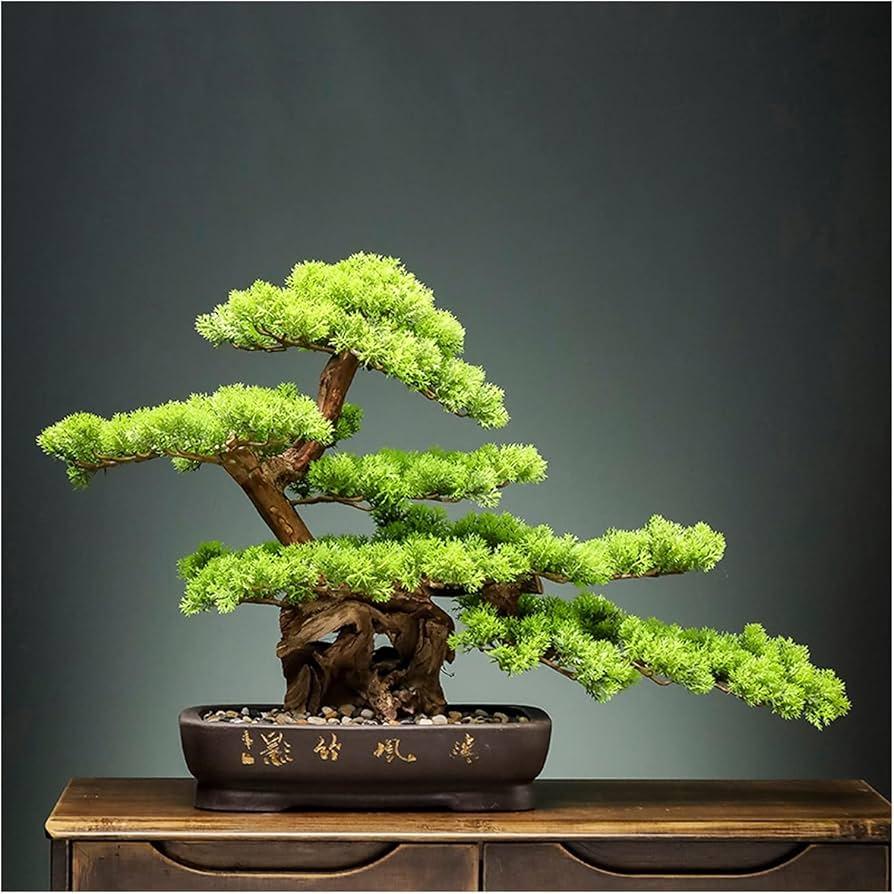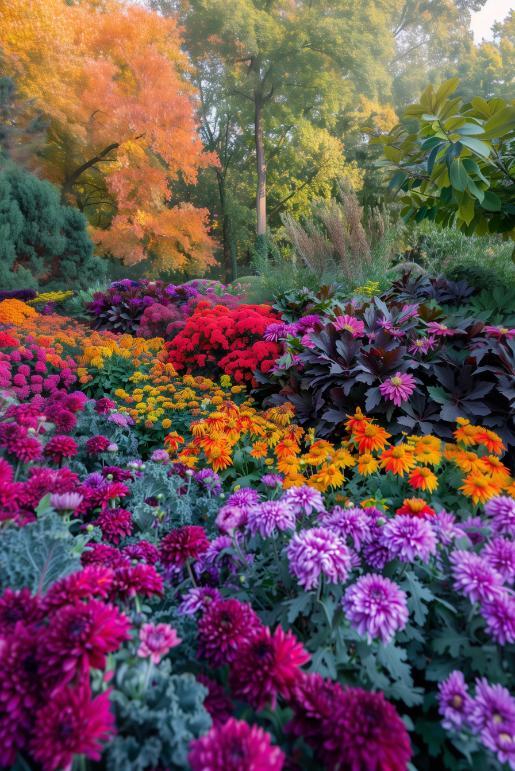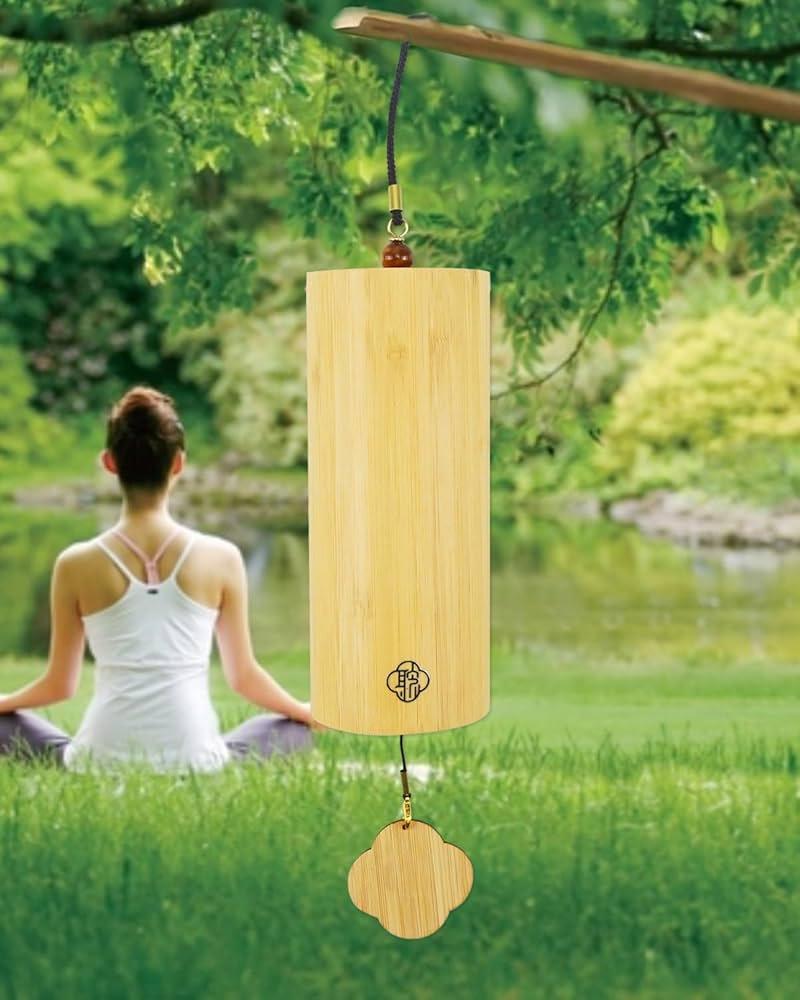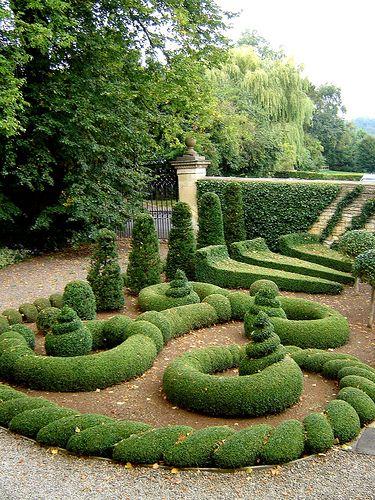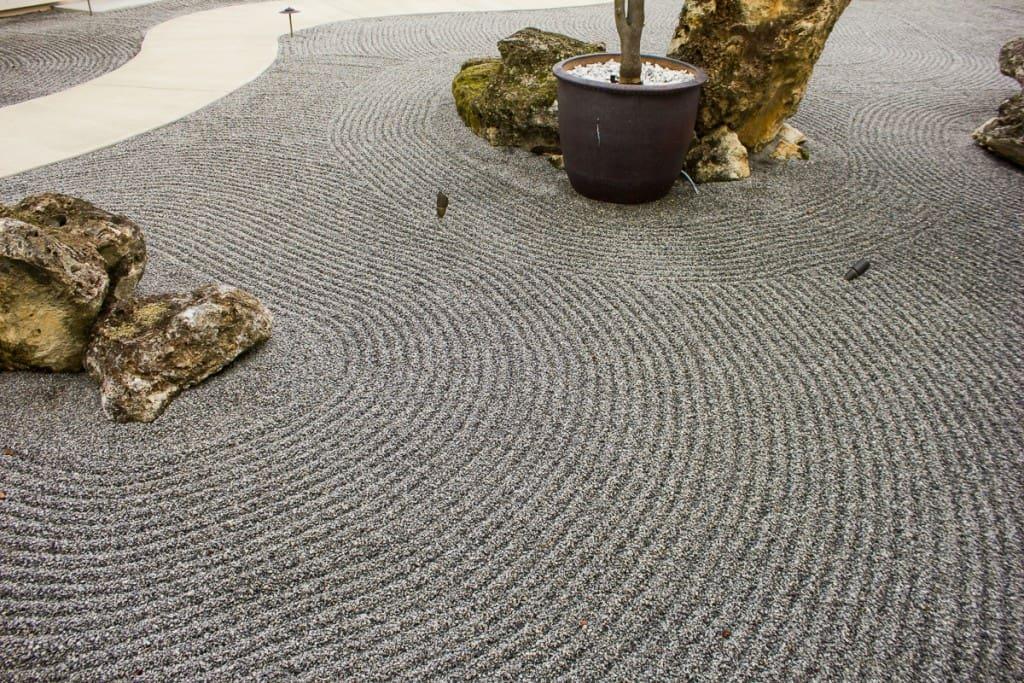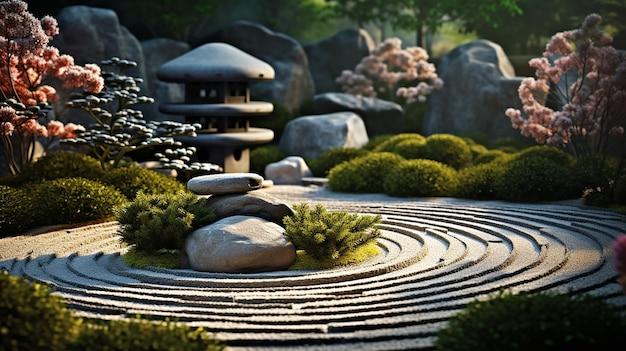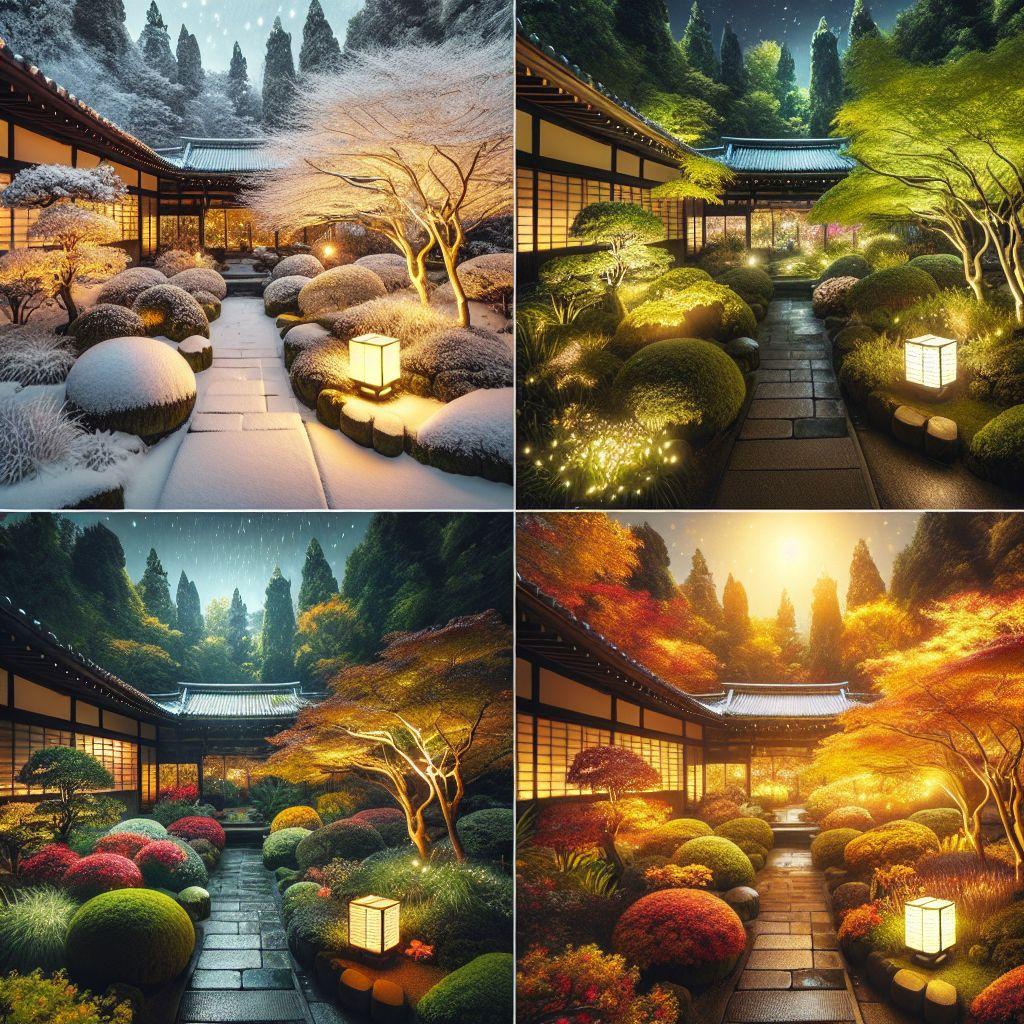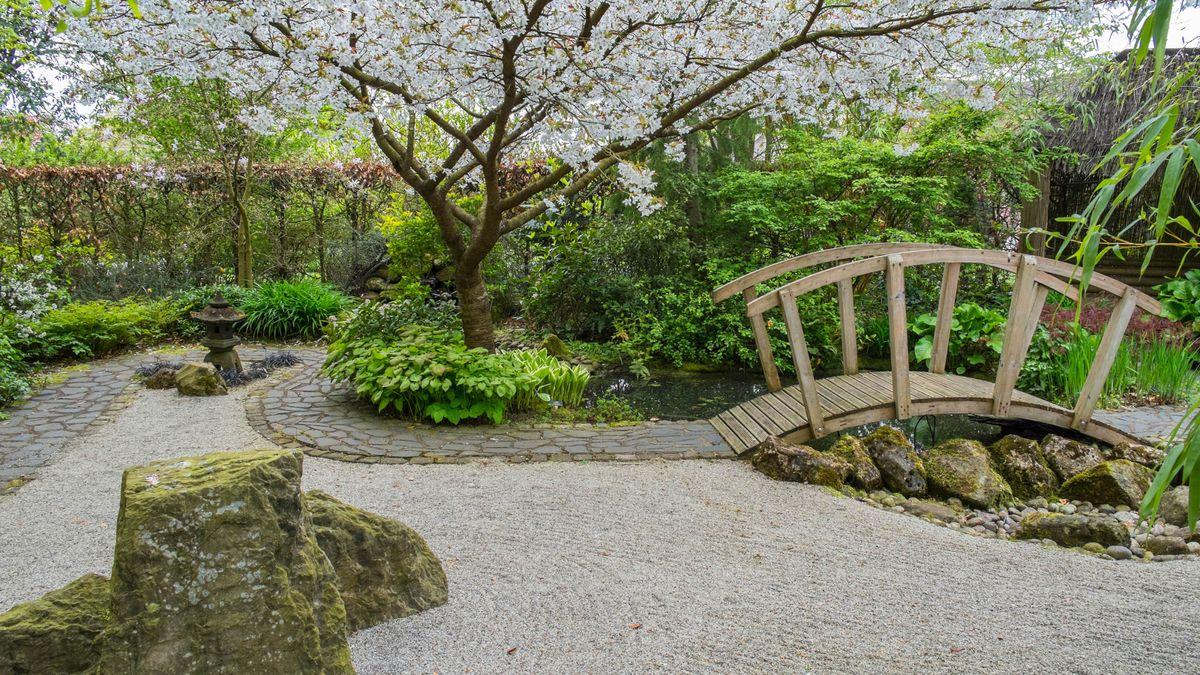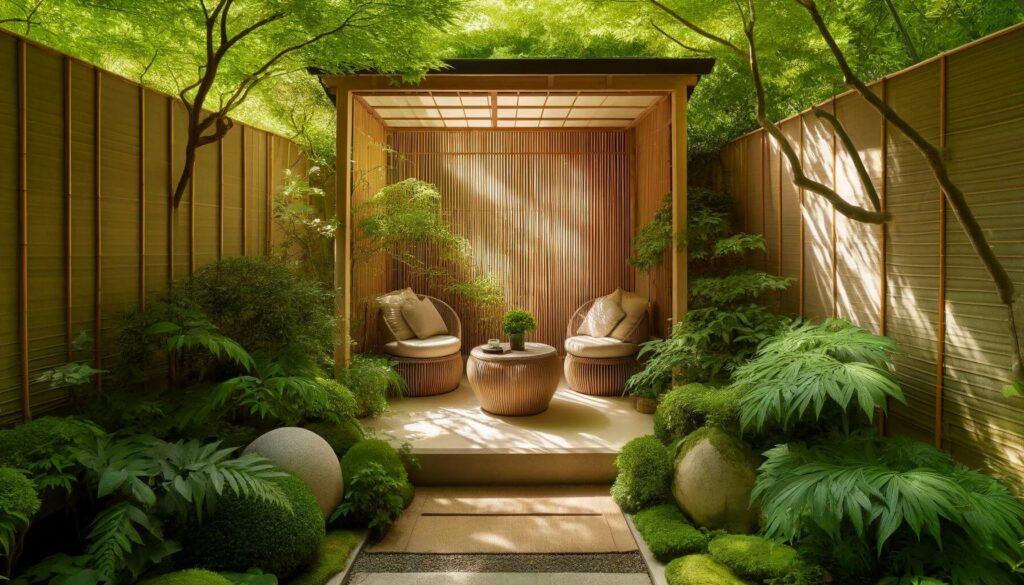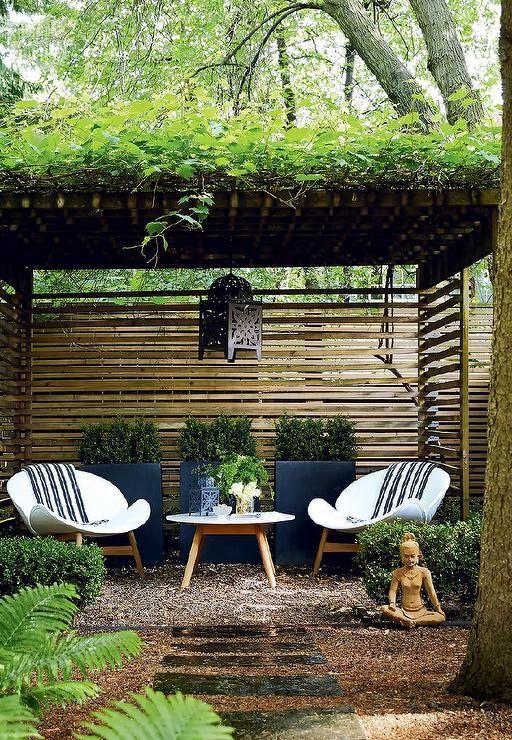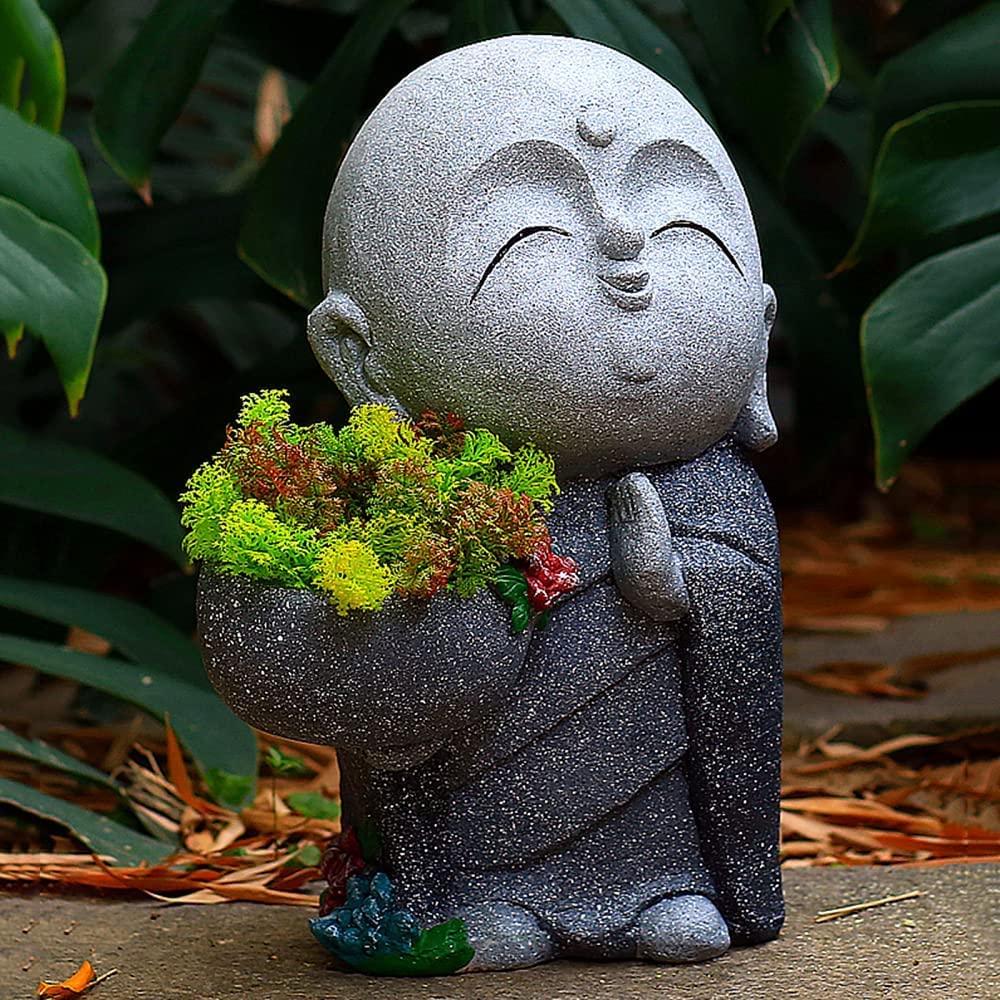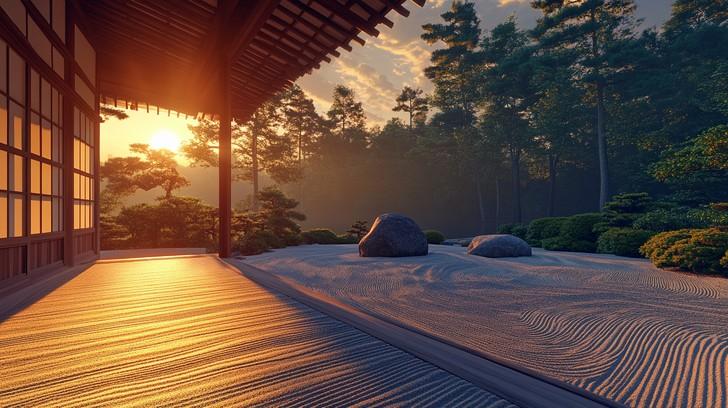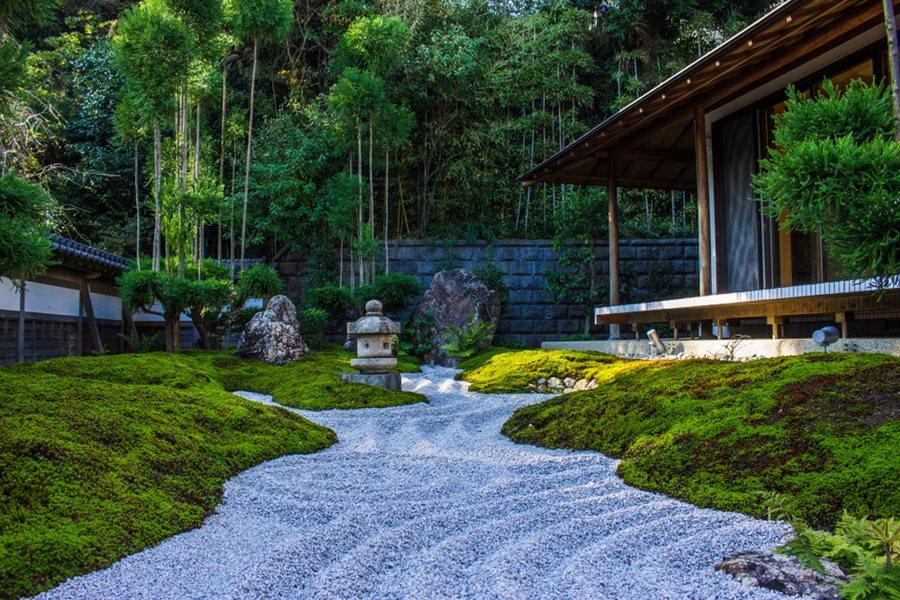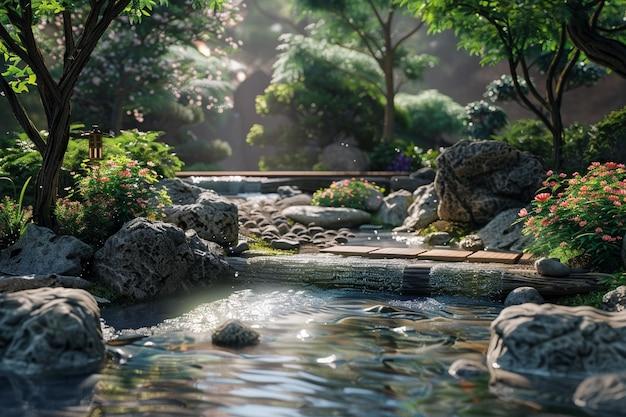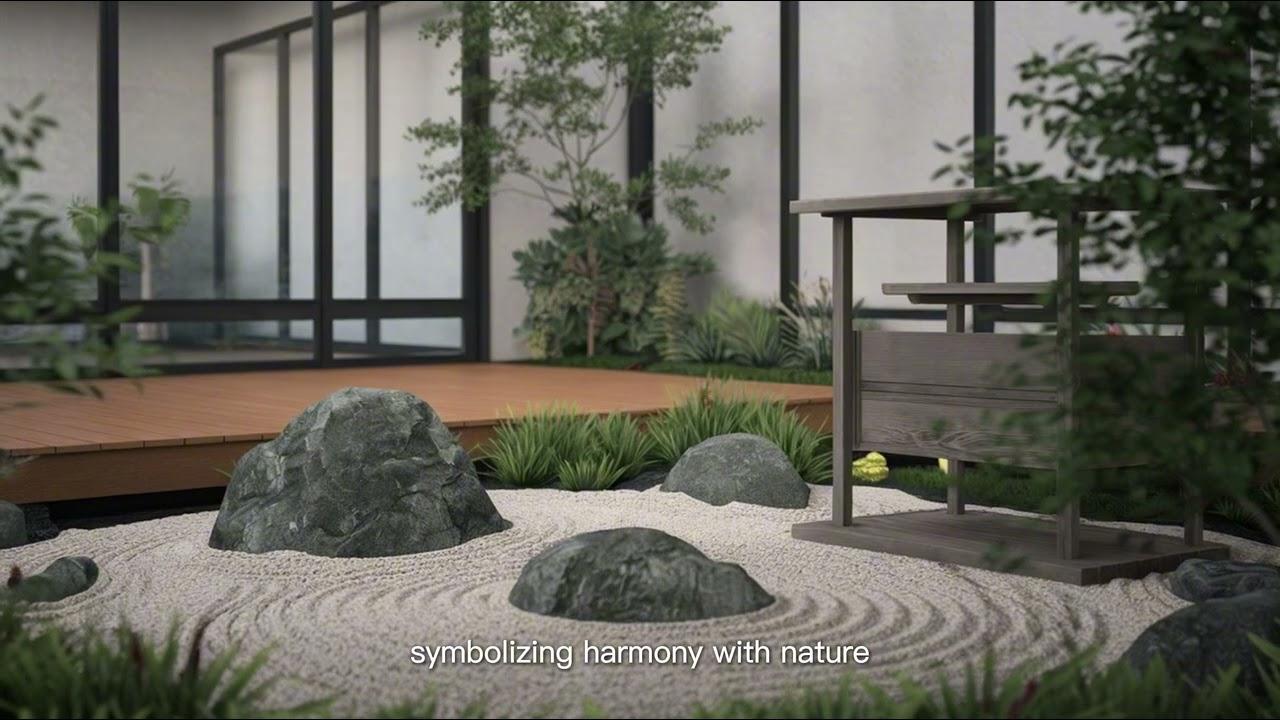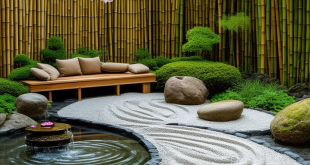In a world that often feels chaotic and overwhelming, the allure of tranquility is more appealing than ever. Zen gardens, rooted in the principles of simplicity and mindfulness, offer a serene space for reflection, relaxation, and rejuvenation. Whether you’re a seasoned gardener or a curious novice, creating your own oasis can be both a rewarding and enlightening experience. In this listicle, we invite you to explore 24 essential elements that will help you cultivate your personal zen garden. From the soothing presence of water features to the artful arrangement of stones, each item serves as a touchstone to peace and contemplation. Join us on this serene journey, and discover how to transform your outdoor space into a sanctuary that nurtures both the mind and spirit. Expect to gain insights into the significance of each element, practical tips for selection and placement, and inspiration for crafting a tranquil retreat that resonates with your own sense of harmony.
Raked gravel patterns evoke tranquility in your Zen Garden
In a Zen garden, raked gravel patterns are more than mere designs; they are a meditative practice that invites serenity and mindfulness. By gently raking the gravel into flowing lines and intricate patterns, each stroke becomes a part of a larger meditation ritual. The rhythmic motion evokes a sense of calm, effectively transforming the space into a canvas for reflection. As visitors gaze upon the smooth gravel, they are encouraged to appreciate the simplicity of nature, creating a sanctuary far removed from the chaos of daily life.
To maximize the tranquil effect of these raked patterns, consider varying the designs to reflect different elements of nature. For instance, establish curved lines mimicking rivers, while circular patterns can represent the sun. Simple yet profound, these designs can enhance the overall atmosphere of peace and clarity in your garden. Explore various techniques through resources like The Spruce, which offer a wealth of knowledge on creating stunning and tranquil outdoor spaces.
| Pattern Type | Description |
|---|---|
| Waves | Flowing lines that mimic the movement of water. |
| Spirals | Symbolize growth and renewal, encouraging contemplation. |
| Circles | Represent the sun, offering warmth and energy to the space. |
| Zen Lines | Straight lines evoke a sense of order and harmony. |
Smooth stones symbolize strength and permanence in Zen Garden design
In the serene aesthetic of Zen gardens, smooth stones play a pivotal role, evoking a sense of strength and permanence. These polished elements not only enhance the visual allure but also symbolize resilience amidst life’s impermanence. As one walks through a Zen garden, the feeling of walking on smooth stones evokes a tranquility that is both grounding and uplifting. Their natural beauty and solidity serve as a reminder of the enduring nature of life, encouraging contemplative reflection and mindfulness.
Choosing the right stones can significantly impact the overall harmony of your Zen garden. When selecting these stones, consider the following traits that contribute to the desired ambiance:
- Texture: Opt for stones with smooth surfaces that invite touch and create visual contrast with gravel or sand.
- Color: Earthy tones of gray, beige, and soft white blend seamlessly into the natural environment.
- Shape: Irregular shapes or rounded stones can symbolize natural formation, adding an element of surprise.
Integrating these stones thoughtfully within the layout can lead to stunning focal points or calming pathways. By arranging them in groups or aligning them along walkways, you create visual connections that guide the onlooker’s journey through the garden. Consider varying the sizes to encourage the eye to explore—large stones can anchor the visual composition, while smaller ones can accentuate the delicate balance of nature.
| Stone Type | Symbolism |
|---|---|
| Smooth River Stones | Stability and Flow |
| Granite Boulders | Endurance and Strength |
| Jade Pebbles | Harmony and Balance |
For more inspiration on creating your Zen garden, visit zenhabits.net.
Bamboo features create a serene atmosphere in any Zen Garden
Bamboo stands out as a quintessential element in any Zen Garden, infusing the space with an organic elegance that promotes tranquility and balance. Its graceful stalks sway gently in the breeze, creating a natural rhythm that calms the senses. The soothing rustle of bamboo leaves has an almost musical quality, inviting stillness and reflection. With its versatility, bamboo can be introduced in various forms—such as fencing, pathways, or decorative elements—offering a cohesive aesthetic that ties the garden together. This natural material not only looks stunning but also feels inviting, showcasing nature’s artistry in its unique textures and hues.
Moreover, bamboo is known for its fast growth and renewability, embodying the essence of sustainability that resonates deeply within the principles of Zen philosophy. In a world where peace and harmony are often disrupted, incorporating bamboo into a Zen Garden serves as a reminder of nature’s ability to thrive and adapt. Its structural strength enables the creation of serene spaces, while its ability to provide privacy enhances the contemplative atmosphere. With its low maintenance requirements, bamboo allows gardeners to focus on the meditative aspects of their space without distraction. To explore more about the benefits of bamboo in landscaping, you can visit bamboogarden.com.
Water elements bring calming sounds to enrich your Zen Garden experience
Incorporating water elements into your Zen garden can create a serene auditory backdrop that enhances your meditative experience. The gentle trickle of a stream or the soft splashes from a fountain evoke feelings of calm and tranquility. As you listen to these soothing sounds, your mind can more easily drift into a state of relaxation, allowing nature to take center stage. Consider the variety of water features available; a small pond with koi fish not only serves as a visual delight but also adds to the ensemble of tranquil sounds.
Here are some water features to consider for your Zen garden:
- Birdbath: Attracts birds and provides delightful chirping over the bubbling water.
- Waterfall: Creates a mesmerizing flow and relaxing soundscape as water cascades over stones.
- Rock Basin: A shallow basin that allows water to gently pool, creating soft echoes throughout the garden.
- Stream: A winding waterway that mimics the sounds of nature, drawing serenity into the space.
- Fountain: Masquerades as a centerpiece, these structures offer rhythmic splashes that captivate the senses.
For those eager to dive deeper into the art of Zen gardens, exploring the interaction between the sound of water and nature can be a truly transformative journey. Water elements harmonize perfectly with plants, stones, and raked gravel, making them essential for anyone seeking an enhanced Zen experience. By immersing yourself in the tranquil ambiance created by water sounds, you can cultivate a peaceful retreat right in your backyard. Discover a range of inspiring water features at Houzz to elevate your Zen garden.
Carefully placed lanterns illuminate pathways in a Zen Garden at night
The soft glow of lanterns scattered throughout a Zen garden transforms the space into a serene oasis by night. Their carefully calculated placement highlights the ornate paths, subtly guiding wandering souls as they traverse through tranquil spaces. As you stroll beneath the canopy of stars, you’ll find that the light dances gently upon the surfaces of raked gravel and timeworn stones, weaving a visual tapestry that evokes calmness and introspection. These enchanting illuminations serve not just as markers for the path, but also as meditative focal points, encouraging visitors to pause and reflect amidst the serene beauty of nature.
Incorporating various types of lanterns can enhance the atmosphere and provide different moods throughout the garden. Some popular styles include:
- Shishi-odoshi: Traditional bamboo lanterns that add soft, rhythmic sound as they gently rock back and forth.
- Stone Lanterns: Classic fixtures that blend seamlessly with the natural surroundings, evoking a sense of timelessness.
- Floating Lanterns: Placed on tranquil ponds, these create playful reflections that invite contemplation.
Here’s a quick comparison of lantern materials and their benefits:
| Material | Benefits |
|---|---|
| Wood | Natural appeal, blends with garden aesthetics. |
| Metal | Durable, adds modern flair to traditional settings. |
| Stone | Enduring, offers a grounded presence in the landscape. |
For further inspiration and ideas on creating your own nighttime garden experience, visit Garden Design.
Delicate moss carpets enhance the natural beauty of your Zen Garden
Soft, lush moss carpets breathe life into your Zen garden, transforming it into a serene oasis. These natural wonders create a gentle, vibrant ground cover that complements the tranquility of gravel, stones, and carefully placed boulders. When surrounded by other elements like bamboo or water features, they enhance the soothing sounds of nature, helping to create a space perfect for meditation and reflection. The stunning green hues of moss not only evoke a sense of calmness but also encourage biodiversity, inviting small creatures like ants and snails to share your peaceful retreat.
Incorporating moss into your garden design offers both aesthetic and practical benefits. By selecting varieties that thrive in your climate and conditions, you can ensure a stunning carpet that requires minimal maintenance while still illuminating your garden. The tactile softness of moss provides an inviting area for barefoot walks, further connecting you to the earth. To cultivate and sustain your moss carpets effectively, consider the following tips:
| Tip | Description |
|---|---|
| Choose Shade | Moss thrives in shaded conditions, away from direct sunlight. |
| Moisture is Key | Keep the soil consistently moist but not soggy to encourage growth. |
| Avoid Compaction | Limit foot traffic or install pathways to protect delicate moss patches. |
For inspiration and more information on creating a harmonious Zen garden, visit Gardenista.
Miniature bridges invite reflection in the peaceful realm of a Zen Garden
Miniature bridges serve as exquisite focal points in any Zen garden, inviting serenity and reflection. These delicate structures, often crafted from natural materials like wood or stone, effortlessly blend with their surroundings, creating a harmonious balance between nature and human craftsmanship. Across the span of these quaint bridges, one can meander into the tranquil waters of contemplation, allowing the gentle sounds of flowing water and rustling leaves to facilitate deep introspection. The bridges symbolize a transition, inviting visitors to step from the chaos of everyday life into the stillness of mindfulness.
Whether arched gracefully or designed as a simple path, each bridge tells its own story, enhancing the spiritual ambiance of the garden. They encourage moments of pause, beckoning individuals to reflect on their journey and appreciate the beauty of the present moment. Incorporating elements such as miniature lanterns or stepping stones alongside these bridges can further enrich the experience, guiding contemplative minds towards peace. For those looking to explore and incorporate such designs, resources like gardendesign.com offer inspiration for creating your own peaceful retreat.
Potted bonsai trees offer a living sculpture within a Zen Garden
Bonsai trees are more than just miniature plants; they are intricate symbols of art and nature that embody serenity and mindfulness. These living sculptures bring an unparalleled elegance to Zen gardens, serving as focal points that captivate the eye and soothe the soul. Their carefully pruned branches and expertly designed shapes inspire contemplation and relaxation, creating a space where one can completely embrace tranquility. With their diverse varieties—from the delicate Juniper to the bold Ficus—each bonsai offers a unique aesthetic and emotional connection that enhances the overall harmony of the garden.
When thoughtfully placed amidst gravel, stones, and traditional lanterns, potted bonsai trees create an enchanting visual narrative. Consider incorporating various sizes and species to build depth and interest, while leveraging these design elements to establish a sense of balance. For those looking to enhance their Zen experience, maintaining a bonsai ensures a rewarding and meditative practice that nurtures both plant and soul. Explore resources like bonsaiempire.com for tips on how to care for these exquisite plants and make your Zen garden a personal sanctuary.
Stone pathways guide visitors through the tranquil Zen Garden landscape
In the heart of a Zen Garden, stone pathways serve as gentle guides, leading visitors through meticulously crafted landscapes that evoke tranquility and contemplation. Each carefully placed stone invites exploration, creating a sense of journey that parallels the inner quest for peace. As you wander along these paths, take a moment to notice the textures of the stones beneath your feet, the whispers of the breeze, and the dappled light filtering through the trees, all harmonizing to establish a serene atmosphere. The pathways, often infused with gravel or sand, create a natural rhythm that encourages one to slow down, breathe deeply, and connect with the surroundings in a profound way.
Cradled between lush greenery and carefully positioned rocks, the pathways beckon visitors to discover various elements of Zen. Here are some highlights to observe along the way:
- Natural Materials: The use of slate, granite, or pebbles adds an organic feel to the paths, contributing to their tranquil aesthetic.
- Curves and Angles: Varied shapes and layouts help guide the flow of energy, subtly encouraging a contemplative walk.
- Footprints in Sand: The gentle drag of feet on sand leaves temporary marks that remind us of our fleeting presence in nature.
- Seasonal Changes: The pathways may transform with the seasons, revealing a new layer of beauty year-round.
For more inspiration on creating your own Zen pathway, visit National Geographic to explore cultural interpretations and designs.
Vibrant flowers add a splash of color to your Zen Garden sanctuary
Incorporating vibrant flowers into your Zen Garden can transform it into a visual feast while maintaining tranquility. These colorful blooms serve as focal points, allowing the eye to dance across the landscape and encouraging a sense of calm. Consider choosing perennial species that not only thrive in your local climate but also complement the serene aesthetic you seek. Adding Japanese iris, lotus, and cherry blossoms can enhance your sanctuary, with each of these unique flowers embodying beauty and balance, principles at the heart of Zen philosophy.
When selecting flowers, it’s essential to consider their characteristics and how they interact with the surrounding elements. Here are some excellent choices to populate your garden:
- Lotus: Symbolizes purity and enlightenment.
- Azalea: Brightly colored blooms that thrive in partial shade.
- Chrysanthemum: Often associated with longevity and happiness.
- Bamboo: Not a flower, but its delicate shoots add height and texture.
For a more structured approach, try creating a flower arrangement using the table below, combining different species for seasonal color:
| Flower | Blooming Season | Color Options |
|---|---|---|
| Lotus | Summer | Pink, White |
| Azalea | Spring | Red, Pink, White |
| Chrysanthemum | Fall | Yellow, Orange, Purple |
For inspiration and guidance on selecting the best blooms for your Zen Garden, visit Gardenia.net.
Wind chimes provide soothing sounds, harmonizing with nature in your Zen Garden
Wind chimes infuse a sense of tranquility into your Zen garden, creating an auditory tapestry that enhances the natural surroundings. As the soft breeze caresses the chimes, they emit delicate melodies that resonate with the whispers of nature. This harmonious symphony can transform your garden into a serene sanctuary, inviting moments of meditation and mindfulness. Imagine settling into a cozy nook, soaking in the peaceful notes that dance through the air, closely intertwined with the songs of chirping birds and rustling leaves.
Incorporating wind chimes in your Zen garden can also serve as a subtle focal point, drawing the eye while promoting calmness and introspection. Available in various materials, including bamboo, metal, and glass, they can be chosen to complement your garden’s aesthetic. The following options can help you select the perfect wind chime for your personal oasis:
| Material | Sound Quality | Durability |
|---|---|---|
| Bamboo | Soft & mellow | Moderate |
| Metal | Clear & striking | High |
| Glass | Bright & delicate | Moderate |
When strategically placed near plants or water features, wind chimes enhance the overall ambiance, making it an experience for all senses. Consider exploring different styles and sizes to find the perfect match for your garden. For inspiration, check out chimes.com to discover a wide selection that could elevate your Zen space.
Sculpted hedges maintain structure and beauty in a well-planned Zen Garden
In a well-curated Zen garden, sculpted hedges become living sculptures that enhance both structural integrity and visual appeal. Utilizing a variety of evergreen plants allows for year-round greenery, while their precise shapes evoke a sense of order and discipline that harmonizes with the garden’s tranquil essence. The disciplined growth of these hedges serves as a counterbalance to the naturally chaotic forms of flora in other types of gardens. When arranged thoughtfully, they frame pathways and zen features, guiding the eye across the serene landscape, subtly inviting visitors to explore and reflect.
To ensure the beauty of sculpted hedges and their health, regular maintenance is essential. Pruning techniques can be applied to maintain both aesthetic appeal and the health of the plants. Consider using tools such as hand shears and hedge trimmers to achieve clean lines and balanced shapes. Aside from their aesthetic contributions, these hedges can serve practical purposes by providing windbreaks or privacy barriers. Explore techniques and design ideas for cultivating your hedges on sites like gardeners.com, where you will find valuable insights on the care and artistry behind creating an impactful Zen garden.
| Hedge Type | Ideal Height | Maintenance Level |
|---|---|---|
| Boxwood | 2-4 feet | Medium |
| Yew | 3-6 feet | Low |
| Japanese Holly | 2-4 feet | Medium |
| Privet | 4-6 feet | High |
Meditation spaces encourage mindfulness and peace within your Zen Garden
Creating dedicated meditation spaces within your Zen Garden transforms it into a sanctuary of tranquility. These areas not only encourage mindfulness but also provide a gentle reminder to focus on your breath and present moments. Incorporating elements such as smooth stones, soft cushions, and natural wood benches can enhance this peaceful atmosphere, allowing you to settle into comfort as you align your thoughts with the rhythm of nature. Floral arrangements or small water features bring in calming sounds, combining visual beauty with auditory serenity, inviting you to pause and reflect amidst the gentle rustle of leaves or the soft trickle of water.
To maximize the impact of your meditation space, consider the following essentials:
- Soft Textiles: Use natural fabrics like cotton or linen for cushions and mats to promote a cozy feel.
- Natural Aromatherapy: Incorporate essential oils or incense to engage the sense of smell, which can be grounding and elevating.
- Mindful Art: Add simple, nature-inspired artwork that evokes peace and beauty, serving as a visual anchor during meditation.
This intentional environment can significantly enrich your meditation practice, fostering a more profound sense of calm. For more ideas on integrating mindfulness into your daily life, explore resources at mindful.org.
Zen sand gardens invite creative expression through artful raking techniques
At the heart of every Zen sand garden lies the artful act of raking, a meditative practice that melds creativity with tranquility. Each stroke of the rake is an opportunity for self-expression, transforming an empty canvas of sand into intricate patterns that evoke a sense of harmony and balance. Practitioners often experiment with various raking techniques, allowing their emotions and thoughts to flow through their hands, creating unique designs that reflect their inner state. Some popular techniques include:
- Straight Lines: Simple yet profound, straight lines symbolize clarity and focus.
- Circular Patterns: Creating circles can represent completeness and the ebb and flow of life.
- Waves: Raking undulating lines mirrors the gentle rhythm of the ocean, cultivating calm.
To enhance the creative process, many enthusiasts incorporate various tools into their practice, each designed to offer distinct textures and patterns in the sand. From traditional wooden rakes to modern, minimalist versions, these tools allow for a variety of artistic expressions. To assist gardeners in discovering the perfect tools, here’s a simple table highlighting popular rakes and their unique contributions:
| Tool | Purpose |
|---|---|
| Wooden Rake | Classic design for straight lines. |
| Metal Rake | Durable and precise for intricate patterns. |
| Fingers/Hands | Personal touch for spontaneous creativity. |
In embracing these techniques and tools, one uncovers not only the beauty of the sand garden but also a deeper connection to the present moment. There are numerous online resources available for mastering raking artistry, especially sites like The Spruce that offer insightful guides and tips for enhancing your Zen garden experience.
Natural elements harmonize beautifully, enriching the experience of your Zen Garden
In a Zen Garden, the interplay of various natural elements creates a serene tapestry that invites contemplation and mindfulness. Raked gravel mimics the tranquil ripples of water, while carefully placed stones provide both structure and focal points for meditation. This harmonious blend encourages a gentle flow, guiding the eyes and the mind through the space. Mosses and ground covers can be introduced to soften hard surfaces, enhancing the organic essence and inviting a sense of lush tranquility. Incorporating bamboo, whether through installations or simple accents, adds a whisper of movement, reminiscent of nature’s whispers in a gentle breeze.
The beauty of a Zen Garden lies not only in its aesthetic but also in its ability to connect the individual to nature. Seasonal flowers can be introduced to bring splashes of color and life, allowing for an ever-evolving experience aligned with the cycles of nature. Water features, even in their simplest forms like a small basin, reflect the sky and surrounding flora, deepening the experience of serenity. Equally, a benign stone lantern casts soft light, adding warmth during dusk. To explore more ideas on natural elements that can enhance the tranquility of your space, visit The Spruce, where you can find a wealth of information on gardening and landscaping.
Seasonal changes bring a dynamic quality to the ever-evolving Zen Garden
Zen gardens are masterful displays of nature’s cyclical beauty, mirroring the transformative changes each season brings. In spring, the garden bursts into life with vibrant blossoms like cherry and plum trees, providing a stunning contrast to the tranquil raked gravel. The delicate fragrance of fresh blooms and the gentle rustle of new leaves create an inviting atmosphere for meditation. As summer unfolds, the lush green foliage offers a sense of abundance, while the sound of water features becoming more pronounced provides a calming backdrop. The interplay between light and shadow, particularly in the morning and late afternoon, accentuates the garden’s contours, inviting contemplative reflection.
As autumn arrives, the dynamic character of the Zen garden is further enhanced by a spectacular palette of reds, oranges, and golds. The falling leaves create a natural carpet that encourages mindfulness as you walk through, emphasizing impermanence. Winter transforms the garden into a serene landscape of white snow and stark branches; the simplicity invites introspection and appreciation for stillness. Each season not only reflects the passage of time but also creates a unique space for personal growth and reflection, reminding us of nature’s ability to inspire peace. Embrace the seasonal journey by continually engaging with your Zen garden. The changes can be documented in a delightful seasonal checklist:
| Season | Changes to Anticipate | Essentials to Incorporate |
|---|---|---|
| Spring | Blooming flowers and new growth | Cherry Blossoms, Rocks |
| Summer | Lush greenery and active wildlife | Water Features, Benches |
| Autumn | Vibrant foliage and falling leaves | Maple Trees, Lanterns |
| Winter | Snow-covered landscapes and tranquility | Evergreen Plants, Stones |
To explore more on cultivating a Zen garden that reflects these beautiful seasonal changes, visit japanesegardens.com. You’ll find many resources and inspirations for creating your own peaceful sanctuary that adapts through the seasons.
Integrating natural wood features promotes warmth in your Zen Garden space
- Natural Wood Pathways: Incorporate wooden pathways that guide visitors through your Zen Garden. These paths not only provide a practical element but also create a visual and tactile connection with nature. Consider using reclaimed wood to enhance sustainability and evoke a sense of history.
- Wooden Benches: A rustic wooden bench can serve as a perfect spot for contemplation. Select pieces crafted with minimal finish to maintain their authentic feel. The warmth of the wood invites you to pause, reflect, and immerse yourself fully in the tranquility of the space.
- Tree Stumps as Seating: Instead of conventional chairs, opt for natural tree stumps as informal seating. Each stump showcases unique textures and shapes, promoting a sense of harmony with the natural landscape.
| Wood Feature | Benefits |
|---|---|
| Wooden Fences | Creates a sense of enclosure and privacy. |
| Wooden Lanterns | Adds soft lighting, enhancing evening ambiance. |
| Live Edge Wood Slabs | Brings elegance and a unique touch to tables or displays. |
Utilizing natural wood elements not only enriches the overall aesthetic but also embodies the principles of Zen by promoting simplicity and balance. Each wooden piece tells a story, connecting the spirit of your garden with the beauty of the outdoors. By thoughtfully integrating these elements, you cultivate a serene environment that delights the senses while nurturing a peaceful mindset. For additional inspiration on wooden features, visit Wood Magazine.
Secluded nooks create personal retreats within larger Zen Garden layouts
In a vast Zen garden, the art of creating secluded nooks can transform the space into a tapestry of tranquility. These intimate corners serve as personal retreats where one can escape the hustle of daily life. By incorporating elements such as soft seating, shaded trees, and natural barriers, these areas invite mindfulness and reflection. The strategic placement of smooth stones and raked gravel can lead the eye toward these hidden sanctuaries, emphasizing their significance amidst the larger landscape. Each nook can be designed to cater to individual preferences, whether it’s a spot for reading, meditating, or simply soaking in the serenity of nature.
The aesthetic of these secluded spots not only enhances the overall beauty of the garden but also promotes a sense of harmony between the individual and their surroundings. Consider adding features like small water features, bamboo structures, or even lanterns for soft lighting that casts a warm glow during twilight hours. Each retreat can be uniquely tailored with specific themes, such as traditional Japanese influences or modern minimalism, to create a personalized atmosphere that resonates with the user. Further inspiration can be drawn from resources like RHS, which showcase various garden styles that embrace seclusion and serenity.
Tranquil seating areas foster relaxation and reflection in your Zen Garden
Incorporating tranquil seating areas into your Zen garden is essential for creating a space dedicated to relaxation and reflection. These pockets of peace could be as simple as a wooden bench or a meditation platform, strategically placed to offer calming views of your garden. Consider using natural materials, such as bamboo or reclaimed wood, to blend harmoniously with the surroundings. Cozy cushions or mats can enhance comfort, inviting you to linger longer while soaking in the serene atmosphere.
When designing these seating areas, prioritize the placement to ensure that you capture the essence of your garden’s tranquility. Think about positioning your seats near gentle water features, lush greenery, or aromatic plants to stimulate the senses. Here are some essential elements to consider for your seating area:
- Shade: Incorporate canopies, pergolas, or strategically placed trees.
- Lighting: Use soft, ambient lights like lanterns or solar-powered fixtures.
- Decor: Adorn with stones, sculptures, or buddhas that evoke peacefulness.
For those seeking inspiration and guidance in creating their own serene space, various online resources provide helpful insights. For more ideas on Zen garden designs, check out gardeningknowhow.com, where you’ll find a wealth of information tailored to enhance your outdoor sanctuary.
Thoughtfully placed sculptures inspire contemplation amid the Zen Gardens charm
In the heart of every Zen garden, thoughtfully positioned sculptures stand as silent sentinels, inviting visitors into a deeper state of reflection. These artistic pieces, ranging from simple stones to intricate figurines, play a pivotal role in enhancing the garden’s serene ambiance. Their strategic placement encourages an exploration of spatial relationships and a meditative journey through the landscape. Engaging with these sculptures often sparks profound moments of introspection, prompting questions about one’s existence and connection to nature.
A well-chosen sculpture can become a focal point, commanding attention while harmonizing with the surrounding elements. Consider incorporating a range of sculptures into your garden design, each curated to evoke a different emotion or thought. Here are some ideas to explore:
- Abstract Forms: Sculptures that distort reality can ignite the imagination.
- Natural Materials: Stone or wood pieces that blend seamlessly with the garden’s landscape.
- Symbolic Imagery: Statues depicting figures or animals that hold cultural significance.
- Reflective Surfaces: Mirrors or polished stones that invite contemplation of one’s self.
To inspire further contemplation, consider the following types of sculptures and their meanings:
| Type | Meaning |
|---|---|
| Lotus Flower | Purity and rebirth |
| Fish | Prosperity and abundance |
| Waving Talisman | Good fortune |
| Yin-Yang Symbol | Balance and harmony |
For further inspiration on incorporating art into your Zen garden, visit Garden Design for expert tips and ideas.
Sunlight filtering through trees enhances the calming vibe of a Zen Garden
In a Zen garden, the play of light and shadow created by sunlight filtering through leafy canopies elevates the space into a serene retreat. The soft golden rays dance on the raked gravel, illuminating the garden’s elements and creating a tapestry of nature’s artwork. This gentle filtering, devoid of harshness, softens the ambiance and draws the eye to the subtle intricacies of carefully placed stones and meticulously arranged flora, inviting mindfulness with every glance.
The effect of sunlight in these gardens is not merely aesthetic; it serves a deeper purpose. As the sun casts a warm glow, it encourages visitors to pause, breathe deeply, and connect with their environment. The filtered light fosters a sense of peace, enhancing the overall meditative experience. This tranquility is enriched by the tranquility of rustling leaves and chirping birds, creating a symphony of nature that soothes the spirit. To learn more about creating peace in your garden, visit Garden Design.
Textured pathways add depth and interest in your Zen Garden pathway design
Incorporating textured pathways into your outdoor haven can significantly enhance the overall aesthetic and meditative quality of your Zen garden. Consider using a combination of materials like stepping stones, gravel, and bark mulch to create a sensory experience that engages the feet and stimulates the mind. Textured surfaces not only provide visual interest but also invite guests to slow down, take in their surroundings, and reflect on the tranquil beauty of the garden. You can design paths that meander through lush plantings, leading to serene focal points such as a water feature or a bamboo grove, invoking a sense of journey and discovery.
To further enhance the allure of these pathways, think about varying the width and shape of your designs. Narrow, winding paths create an intimate feel, while broader walkways can serve as gathering spaces for contemplation and community. Integrate elements such as pebbles, moss, or even engraved stepping stones to add layers of texture and interest. Pair natural hues with splashes of color through strategically placed flower beds or ornamental grasses. These choices not only resonate with the principles of Zen philosophy but also allow for personal expression within the harmonious framework of your garden. For more ideas on enhancing your outdoor space, visit Architectural Digest.
Gentle streams create a peaceful movement within your Zen Garden ambiance
Gentle streams are the perfect complement to any Zen garden, as they embody tranquility and fluidity in motion. The soft sound of water trickling over smooth stones creates a serene atmosphere that enhances mindfulness and meditation. Observing the flow of a stream encourages a sense of calm, allowing you to release the chaos of daily life and find clarity. To cultivate this soothing presence, consider incorporating small water features, such as a bamboo fountain or a pebble stream, into your garden design. These elements not only provide auditory pleasure but also serve as a visual focal point, drawing your eye and inviting you to pause and reflect.
In addition to enhancing the ambiance, the gentle movement of water supports the overall balance of your Zen garden. Pair your stream with lush greenery and strategically placed rocks to create harmony within the landscape. Consider planting aquatic plants like lotus and water lilies, which can thrive along the edge of your water feature, adding both beauty and sustainability. Choose stones that complement the softness of the water’s flow, arranging them in a manner that encourages the natural current. The result is an inviting retreat where one can escape, reflect, and rejuvenate amidst the peaceful embrace of nature.
Embracing simplicity allows true serenity to flourish in your Zen Garden
In the world of Zen gardens, clutter can often overshadow the peace you’re seeking to cultivate. By focusing on essentials, you open the door to a world where simplicity reigns supreme, allowing your mind to quiet and your spirit to rejuvenate. A minimalist approach can take the shape of carefully placed stones, a gently raked sand surface, or the strategic positioning of plants. Each element serves a purpose, drawing the eye and fostering contemplation without the distractions commonly found in more ornate landscapes. The result is not just a visual delight, but a comprehensive sensory experience that resonates deeply within.
In a dedicated meditation space, the idea of embracing simplicity can manifest through the use of natural materials that harmonize with the environment. Consider incorporating elements such as small wooden benches, bamboo fences, and smooth river rocks to create a sense of connection with nature. Each choice should invite reflection and serenity, minimizing visual noise while encouraging deeper awareness. A simple table with various Zen tools can facilitate rituals that center the mind, such as your personal collection of stones or fragrant incense. Here’s a quick overview of items that can enhance your journey towards tranquility:
| Zen Item | Purpose |
|---|---|
| Rake | To create calming patterns in sand |
| Stones | Symbolize stability and presence |
| Bamboo | Represents resilience and simplicity |
| Water feature | Enhances tranquility with soothing sounds |
| Plants | Adds life while promoting balance |
By thoughtfully curating your Zen garden, each element must bring harmony and meaning to your space. As you pare down distractions and focus on what truly resonates with your spirit, the essence of serenity begins to flourish naturally. Allow this process to inspire your own interpretations of simplicity, as you develop a personal sanctuary that caters to your inner tranquility. For more inspiration on minimalist design in your Zen retreat, check out Architectural Digest.
In Retrospect
As we conclude our exploration of “,” we invite you to reflect on the harmonious elements that can transform any space into a serene sanctuary. May the stones, plants, and thoughtful decor you integrate inspire moments of relaxation and contemplation. Each touchstone serves as a gentle reminder to pause, breathe, and connect with the tranquility they embody. Embrace the art of simplicity, and let the beauty of your Zen garden nurture your spirit and cultivate inner peace. Thank you for embarking on this journey with us—may your path be filled with mindful moments and serene landscapes.
As an Amazon Associate I earn from qualifying purchases.
 decorafit.com Design ideas for your home and patio
decorafit.com Design ideas for your home and patio

